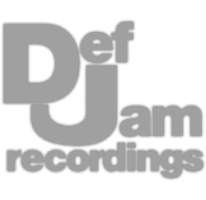Professional Analog Mastering.
Professional Analog Mastering.










When mixing kick and 808 it’s important to know how to separate the 2. When trying to clear room for the kick within an 808, use an EQ on the synth portion of the 808 to attenuate the kick's fundamental - or, use a compressor and side-chain the kick.
One of the easiest ways to create an 808 quickly, and cycle through various tones is with the SubLab plugin, which combines a kick sample with a synth. Then you can introduce saturation and compression within the plugin, as well as filtering and adjusting levels and timing.
In the synth section, we can affect the ADSR, as well as change between sine, triangle, saw, and square waves.
I bring this plugin up first since it shows us all of the elements that go into mixing an 808 and helps to illustrate that a kick sample is combined with a synth and specific processing to achieve the intended sound.
Let’s take a listen to some of the presets this plugin offers, and keep in mind that we’ll be recreating this through various means in future chapters.
The popular plugin Omnisphere shows us how we can use a sample-supporting synth to layer kick samples, synths, or various waveforms, and processing. For example, I can import a kick sample that has the tone or timbre I want, and then enable a second layer.
I’ll use this layer to trigger a sine wave, or maybe an emulation of a classic synth or piece of hardware - then I can blend the 2 signals.
The ADSR section will let me make my sine wave or synth longer or shorter, meaning I can time it to my BPM.
Lastly, in the FX section, we can introduce distortion, saturation, or whatever we want. In this case, I just inserted a saturation plugin on my channel strip to create a cohesive sound.
Let’s take a listen.
Sometimes a synth won’t give us the option to import samples, meaning we’ll have to combine the synth aspect of the instrument with a kick sample in our DAW. So if I’m using this Serum synth, I can select a bass press to get started or pick some waveforms.
After dialing in the sound I want, I can introduce a kick sample, in this case, a free kick sample from spitfire audio, and blend the synth with this kick. I’ll make adjustments as needed, and process the kick or synth if I want to add distortion or compression.
Let’s listen to the sample kick sample being used, but with various bass, and synths to understand how they collectively create an 808.
The kick has just as much impact on the overall sound as the synth - that said, if we want to have a lot of kicks to choose from, we can always go to YouTube and find free kick samples before downloading them with a site like Youtube to MP3.
After downloading it we can import the kicks into our session and layer them with a bass synth.
Let’s listen to a few free kick samples combined with the same synth so we can better understand how the kick changes the timbre of the overall 808.
If you want a unique sound, don’t feel obligated to stick with traditional kick samples. Anything with an aggressive attack will work - furthermore, we can edit just about any sample to work well if we change the pitch, ADSR, frequency response, and more - depending on what you’re trying to achieve.
For this example, I found free, open-source samples of thunder, a punch, an explosion, and a stomp, and then processed them with an EQ and short reverb.
These definitely aren’t the best demos but they should give you an idea of how you can combine creative samples with synths to make a unique 808.
If the synth aspect is covering up too much of the kick sample, we can use an EQ to find where they overlap and then attenuate frequencies on the synth to give the kick more room. With this Shade EQ, I’ll side-chain my kick and then observe the spectrums.
I’ll dip the kick’s fundamental, in turn giving it more room whenever both the synth and kick play.
Let’s listen and notice how the kick has more room.
In addition to an EQ or instead of an EQ, we can use side-chained compression to create some room for the kick. I’ll place the compressor on the synth and then side-chain the kick - this way whenever the kick hits the synth will be attenuated.
This gives the kick some space to occupy and gives us some more control than the EQ - as we can now control the ADSR of the attenuation using the attack, range, hold, and release.
Let’s listen and notice how the kick has more room, similar to last chapter.
This last way to blend a synth and kick is probably the simplest - all you really need to do is increase the attack of the oscillator. As a result, the sine wave, or whichever waveform the synth is generating will start later - either in the middle of or right after the kick sample.
This lets the kick cut through, and then allows it then be followed with the synth.
Let’s take a listen.
If we created our 808 with a synth track and kick sample, we can change both their outputs to a collective bus. On this bus, we can introduce compression, saturation, maybe upward processing, or anything we want to collectively affect the sound of the 808.
Let’s listen to these processors being enabled and notice how it creates a full, impressive, and cohesive sound.
Last up let’s create a really aggressive sound for our 808 by collectively processing the synth and kick with a clipper. I’ll use this saturate plugin and change the clip type to hard before driving the input into the clipper and adjusting the detail slider.
This will add some white noise whenever the clipper is hit, making for an aggressive 808. L et’s take a listen.